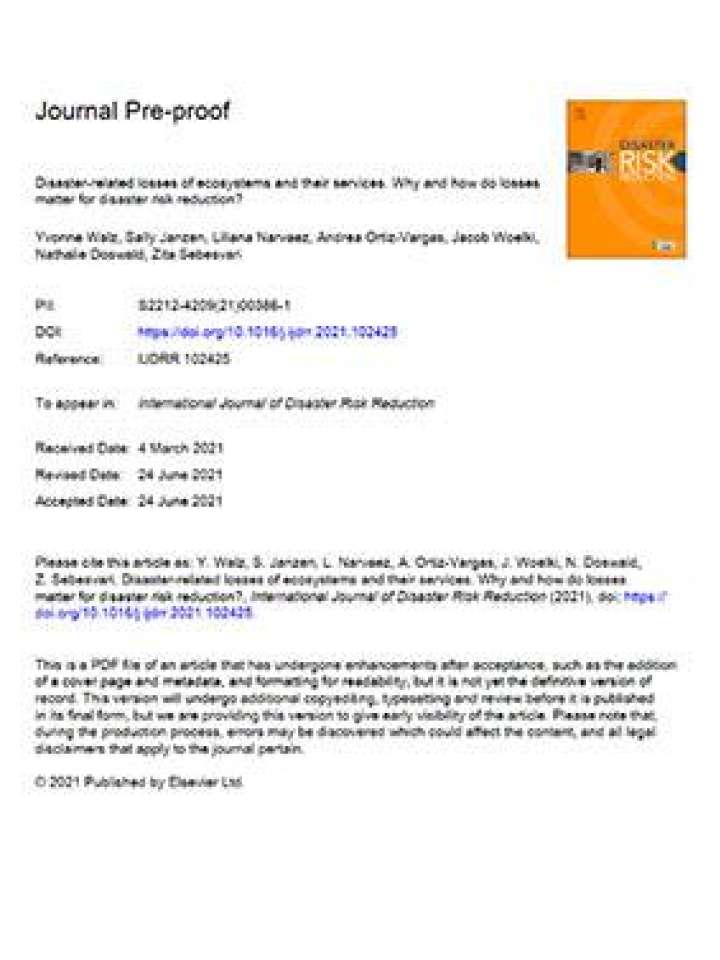Disaster-related losses of ecosystems and their services. Why and how do losses matter for disaster risk reduction?
This report discusses how climate-related hazards, more specifically droughts, floods and storms, cause the largest share of people affected by disasters and major economic losses. While social and economic disaster-related losses are monitored and documented, this is not well established for the environmental losses. It is well known that environmental degradation is a key driver of disaster risk. As such, healthy ecosystems are acknowledged to contribute to disaster risk reduction (DRR) through their ecosystem services (ES). Yet they are at the same time heavily affected by disasters.
Disaster-related losses of ecosystems and their services as well as the implication on overall DRR are not well understood. To address this knowledge gap, this research builds on a structured review of peer-reviewed literature and Post-Disaster Needs Assessments (PDNAs) to generate scientific evidence of disaster-related losses of ecosystems and ES to climate-related hazards such as droughts, floods and storms. The established database of disaster-related losses of ecosystems provided the basis to further explore the link between disaster-related losses of ecosystems and related losses of ES. An additional review of scientific literature delivered evidence that losses of ES are many times higher than documented so far.
In order to better understand, how disaster-related losses of ecosystems and ES ultimately alter disaster risk, the report showcases the link between disaster-related losses of ecosystems and their services against the three dimensions of disaster risk. Regulating ES reduce disaster risk through mitigating hazard and exposure. Provisioning, regulating, habitat and cultural ES help to reduce vulnerability. Disasters diminish the capacity of ecosystems to provide ES, which leads to increasing disaster risk. The authors conclude this research with three constructive recommendations for integrating disaster-related losses of ecosystems and ES in a more comprehensive manner into disaster risk monitoring – notably the monitoring structure of the Sendai Framework for Disaster Risk Reduction. The aim of these recommendations is to support a more comprehensive monitoring of disaster-related losses including the environmental dimension and better acknowledge the role and contribution of ecosystems for advancing DRR.
Explore further

